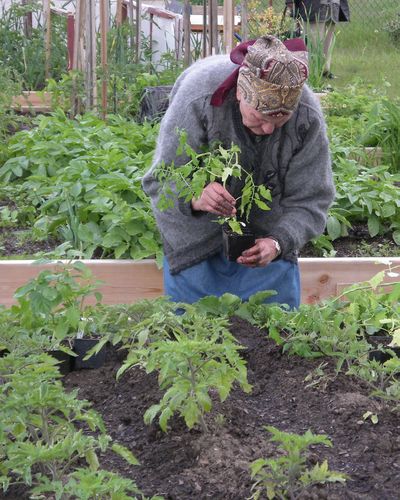Raised bed gardens are easy on the back, tough on weeds

Raised-bed gardening has become a hot topic with the resurgence of vegetable gardening in the last few years.
The advantages of growing your vegetables in a raised box are many. First, the growing beds are easier to reach and care for. For those of us who look at the ground and wonder how we are going to get up off it, this is important. Raised beds use less water especially if they are outfitted with drip-irrigation systems. The soil in raised beds is often a blend of compost, manure and good garden soil, so it holds water well, drains easily and doesn’t harbor the weed seed found in old-fashioned beds. The better quality soil is also more productive.
Building raised beds is not difficult or expensive if you have access to a few tools (or friends with tools) and are willing to scrounge materials. Beds can be built out of new or salvaged dimension lumber, new or used concrete block, concrete rubble, large animal watering troughs; basically anything that will hold the weight of the soil and survive the weather and damp soil. The most rot-resistant woods are redwood and cedar, but they are expensive. The new composite plastic lumber will last forever but because it is are flexible will need more supporting posts. Don’t use pressure-treated wood or old railroad ties unless you line the inside of the box with heavy plastic to keep chemicals in the wood from leaching into the soil.
Raised beds can be built to fit whatever level space you have available. Keep in mind the size of the plants you want to grow though. Trying to stuff one zucchini, two tomato plants, peppers and lettuce into a 4-foot-square bed probably won’t work. Most raised beds shouldn’t be more than 4 feet wide, so it’s easy to reach the center of the bed from either side. Orient raised beds to run north to south so that the sun can reach all sides of the bed as it moves through the day. If you have gophers, attach quarter-inch hardware cloth to the bottom of the box so they can’t tunnel into it.
Bed soil needs to be a blend of equal parts of compost, aged manure, finely ground age bark and loamy soil. Soil straight from an old garden space tends to pack down too much in a raised bed or contain a lot of weed seed.
If you buy commercial soil mixes, visit the dealer so you know what you are getting. There is no set definition for good raised bed soil. If you can still easily see bark or wood fragments in the mix, leave it right where you found it. The raw wood will steal nutrients from the soils as it continues to break down.
To water a bed, install a soaker hose, strips of drip tape or some micro sprinklers and set them on a battery powered timer. The water automatically goes right to the plants.